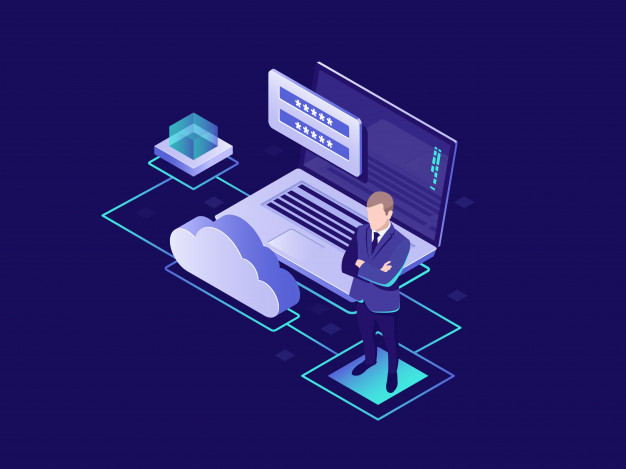All organizations should start preparing today to brace themselves for the data disasters of tomorrow. Data-related mishaps, including natural calamity (like earthquakes), unforeseen incidents (like fires, massive power outages), or any other data disaster (like deletion of data due to human error, a virus attack, or any other cybersecurity incident), can happen at any moment. An organization’s precious data is at stake and is prone to a considerable loss if proactive maintenance is ignored or not carried out properly in a timely fashion. Organizations cannot afford to lose any data, as it may contain sensitive and valuable information related to an organization’s balance sheets or their customers’ personal information. The most efficient way of preventing data loss and tackling the latest data breach, malware intrusion, or failure of instances is having an effective data disaster recovery management plan.
There are several occurrences that can result in a data loss situation, such as these eight:
-
- Natural disasters: These are often unpredictable. Earthquakes, building collapse, fire outage, cyclones, and floods can cause a major hit to your valuable data. These conditions are unforeseen, so alerts and prior notifications about such disasters are near to impossible. Organizations taking prior data backups can be the only way that can help out in data recovery.
- Storage device failure: There may be several reasons why storage devices can fail, such as power surges or power fluctuations, overheating, frequent shaking of the device on bumpy roads, or just wear and tear.
- Power outage: Frequent power surges or fluctuations can lead to data loss if the computer is in the middle of processing something that it cannot complete.
- Liquid damage: This is a pretty common problem nowadays where every other person is working on their laptop while sipping coffee in Starbucks. A sudden unwanted nudge can spill the coffee, resulting in short circuits or hardware failure. If your data is not backed up and resides only on the device’s hard drive, it might be lost.
- Software or system files corruption: We’ve all been there: working on a computer system and witnessing the pain of software or operating system files crashing, and seeing the error-message popup that looks like a detonator.
- Malware attacks: Ransomware is the latest threat to the valuable data. Other threats involve Trojans or other malware, phishing, and distributed denial of service (DDoS) attacks.
- Computer theft: Theft of physical devices like laptops and mobile phones is more likely to happen at cafes, airports, restaurants, cars, and taxis.
- Internal theft: Nobody knows when an angry staff member can wreak havoc by stealing or destroying valuable data that may contain crucial information.
Although there are no foolproof solutions available for data recovery or protection from every problem, here are four specific steps that can help organizations prevent or mitigate the risks:
Regular data backups
The simple meaning to data backup is keeping one or more duplicate copies of the same data on multiple hard drives, machines, or locations. This can also mean to keep different copies of the critical and business-centric applications, like email, CRM, and payroll. Having a duplicate copy of the data or the datacenter ensures the existence of the data at a safer site, which can be used for recovery when the data is somehow lost. Implementing a 3-2-1 rule can be a robust backup solution which is all about “creating three copies of data, storing them on two different storage devices with one stored offsite.” There are mainly four ways that an organization can back up its data.

- Local backup or onsite backup: This is the simplest approach small organizations or small businesses can use to back up their valuable data. This involves copying the critical data to a separate machine, referred to as a server, which is placed in the same location or office where all other computers are placed. This is a very economical and easiest approach an organization can follow, but the disadvantage to this approach is that if any natural disaster or catastrophic weather condition like earthquake occurs or the building catches fire, all the stored data, along with its backup, are destroyed together.
- Offsite backup via hardware: This is very similar to the first approach, but the only difference is that in this case, the data is copied in removable storage which can be safely ejected and kept on a different location which is far away from the office building location. This can help prevent data in case of any natural disasters talked above. But the disadvantage to this backup approach is that moving data from one location to another can be a cumbersome process and can involve huge cost and new risks.
- Offsite backup to the cloud only: This approach is different from the above two. This involves copying the data to cloud-based storage center instead of storing it onsite. The backups on the cloud can be scheduled at regular intervals automatically, avoiding the hassles of remembering the date and time to take the backups. Even the copies of the backups are managed date-wise and the copies more than 30 days or 40 days older are automatically removed to make room for incoming backup copies. Most cloud service providers also offer additional security options like end-to-end encryption, automated password management, and automated recovery in an incident of data loss.
- Combination of onsite and offsite backup: This involves the combination of both types of data backups: onsite and offsite. While the offsite cloud storage backup ensures the safety and security of data in case any catastrophe, the onsite backup copy keeps the same data within the proximity that will allow a quick restoration. It is always a good practice to create multiple snapshots of data at separate destinations far away from each other, but on the other hand, the security, the transmission time, and cost and the storage limit should also be taken into consideration.
Data encryption
It is not enough to store the data onsite or on cloud-based storage — the safety and security of data at that location are also equally important. Having a good encryption solution ensures the safety of the information even in case of any theft or an intruder attack. An organization should follow the best encryption practices in both cases in transit or while at rest.
Firewalls and other threat prevention tools
Protecting a system with a robust firewall or antivirus software is an essential step to be taken for the prevention of security breaches by unauthorized access. Installing firewall software can ensure the protection of the system from any outbound connections, and it also raises the alarm if any data packet approaching the system is identified to be coming from any blacklisted IPs. Having advanced security solutions like intrusion detection systems (IDS) can provide timely notifications, and intrusion prevention systems (IPS) can even proactively take necessary actions to prevent any malicious activity or violations of policy. Such automated preventive measures can create a major difference between an attempt to breach and actual loss of data.

Laptop or storage device protection
Laptop or storage device theft is likely to happen at sites outside home or office premises, such as coffee shops, airport lounges, restaurants, or taxis. In such situations, risk of data loss can be reduced by having options like device tracking, remote device lock, and remote data wipe. To prevent data loss from laptops or mobile phones from any liquid spilling over it, power surges and theft, having a timely backup at a centralized location can help. For medium or large organizations, having a genuine mobile device management (MDM) solution can help prevent all the risks mentioned above. Having additional layers of security like multifactor authentication can also help prevent any unauthorized access to the device in any incidence of cyberattacks.
Preventing data loss: Mission-critical for all organizations
In today’s technology-centric era, the most valuable entity any organization or individual has is the data they possess. This data can be of any type such as bank account details, credit/debit card information, health records, passwords, and any other personal information. Disaster can strike at any time and can occur in any form, from a laptop theft to storage device failure, to catastrophic weather conditions, or some liquid spilling on a laptop. First, be aware that data loss can happen at any time. Then, implement the data loss prevention techniques we discussed here. Do so, and you will save a lot of time, cost, and, of course, your vital and priceless data.
Featured image: Shutterstock




As for me, the main question is how to protect yourself online https://utopia.fans/privacy/fully-fledged-guide-on-ways-to-protect-your-data-online/ and then you can learn what is what. As even many of those, knowing the difference between these things, don’t know how to stay safe online.